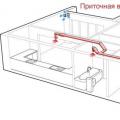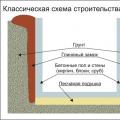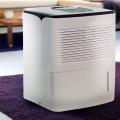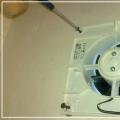The health of its inhabitants largely depends on how much water vapor is contained in the air of a dwelling. For good health, it is important that the norm of air humidity in the apartment corresponds to standard indicators.
There are various control methods to measure this value. Having determined the degree of humidity, measures should be taken to reduce or increase the water content in the atmosphere of the dwelling.
Water vapor is always present in our planet's atmosphere. To measure them, the concept of absolute humidity is used. It denotes the mass fraction of water content in one cubic meter of the gas mixture. At an ambient temperature of 0 ºС, this value corresponds to 5 g/m 3 .
As the air temperature rises, water will evaporate faster, which increases the percentage of moisture passing into the atmosphere.
Various factors influence the degree of air humidity. This time of year, regional climate, weather conditions, location of the apartment, used building and finishing materials
The term relative humidity refers to the amount of moisture in the air at a certain temperature compared to the maximum amount of water vapor that could saturate the atmosphere at that temperature.
Speaking about the norm of humidity in a dwelling, it is precisely this relative value, expressed as a percentage, that is meant.
The effect of humidity on well-being
It has long been noticed that people are extremely sensitive to the content of water vapor in their homes. With a low or high moisture content in the air, the inhabitants of the apartments feel uncomfortable. The most pronounced symptoms are weakness, fatigue, headache, decreased immunity.

With low humidity, dust accumulates in the air. It creates conditions for the reproduction of the smallest dust mites that contribute to the development of allergies.
If the indoor climate is too dry, then this contributes to the accumulation of static electricity, due to which the smallest dust particles accumulate in the air. This is an excellent environment for the prosperity of bacteria and microscopic organisms that cause various diseases.
In such rooms, people often experience dry skin, which leads to dermatitis, brittle hair, and the appearance of early wrinkles. Drying of the mucous membranes contributes to the development of frequent colds, as well as eye diseases.
Due to the slowdown in blood circulation, the load on the heart increases, which can lead to increased pressure, ailments of the cardiovascular system.
No less dangerous and too humid microclimate in the house. In this case, favorable conditions are formed for the prosperity of bacteria, mold, fungi, which organize colonies on the wet walls.
The harmful substances emitted by these unicellular creatures can lead not only to the development of allergies, but also to acute poisoning. Its first symptoms are weakness and dizziness.
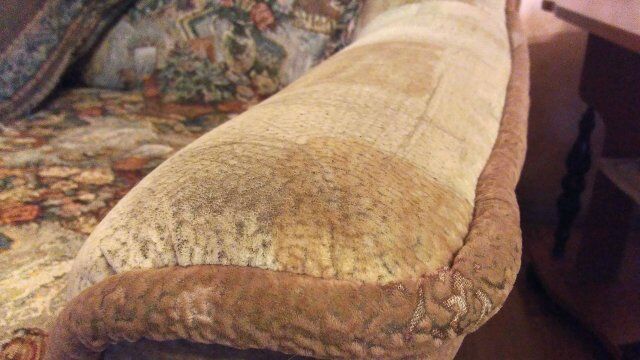
High humidity has a negative impact on people's health, as well as on the condition of furniture and household appliances, which quickly fail.
A long stay in a damp room threatens the development of all kinds of diseases - from the banal acute respiratory disease, to rheumatism and tuberculosis. With increased humidity in living spaces, there is a lack of oxygen, which increases the load on the heart and leads to diseases of this important organ.
It is especially dangerous if an increased rate of water vapor is combined with high air temperature, which can cause heat stroke or even a heart attack.
Since air humidity is an extremely important criterion for a comfortable living environment, there are special regulations that regulate its importance.
GOST 30494-96 indicates indicators of seasonal moisture content in housing stock: for summer, the boundaries of optimal air humidity are determined in the range of 30-60 percent, for winter - 30-45%.
There is also a corresponding SNiP, according to which the rate of 40-60% applies for any time of the year. For humid areas, an indicator of 65 is allowed, and for very humid areas - 75 percent.
It should be noted that the standards are designed for construction organizations, most people define air with 30 percent humidity as dry.
- in the bedroom;
- in the nursery;
- in the living room;
- in the office;
- in the kitchen and bathroom.
Bedroom is of great importance, since healthy sleep largely determines the state of a person and helps maintain immunity. The ideal degree of humidity for this room is 40-55%.
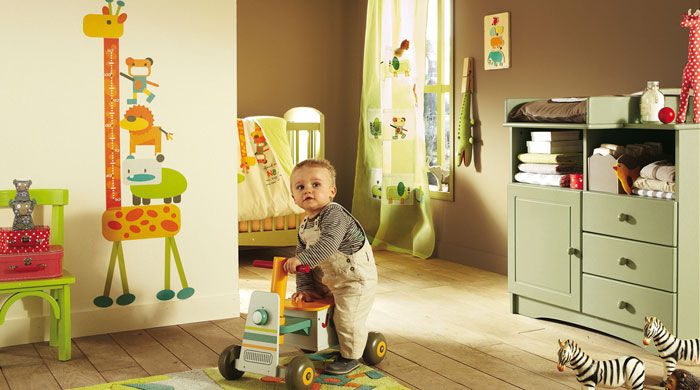
In the case of colds, it is desirable to increase the moisture level in the children's room to 70%, which will help moisturize the mucous membranes and speed up recovery.
Of paramount importance is maintaining the necessary proportion of water vapor in the nursery, since a fragile body is more sensitive to heat and cold, and also more susceptible to infections. An indicator of 50-60% is considered optimal.
Insufficiently humid air dries out the nasopharynx, opening the way to colds, and is also harmful to the skin, causing peeling and even dermatitis. It should be borne in mind that the temperature in the nursery should not exceed 24 ºС.
Usually under living room the most spacious room of the apartment stands out, where the family spends several hours every day. The most comfortable level of humidity in this room can be considered 40-50%.
This standard ensures people's well-being, while also ensuring that electronic devices and expensive furniture, which is often installed in the living room, are in excellent condition.
IN office or library, a lower moisture level of 30-40% is acceptable. This is due to the fact that books and documents are usually stored in these rooms, as well as office equipment, which can be damaged by an excessive proportion of water vapor in the atmosphere.
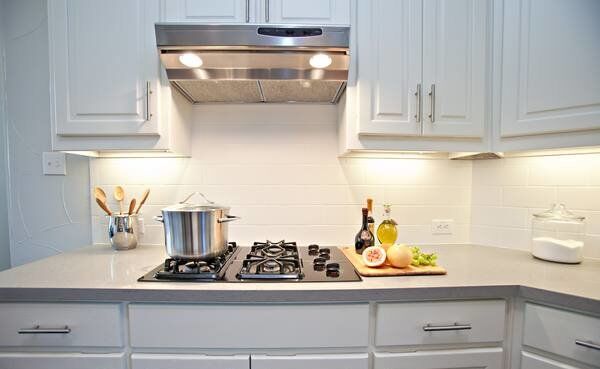
The current humidity standards are designed only for residential premises. They do not apply to kitchens, corridors, bathrooms and other office spaces.
For cuisine And bathroom characterized by an increased temperature and humidity regime, which negatively affects people's health, the state of equipment and furniture. It is important not to forget about these rooms in order to bring the degree of water vapor content to 45-50%.
How to visually determine the level of humidity?
Having shown observation, it is easy to conclude what kind of microclimate is typical for the room.
ABOUT dry air show the following features:
- the earth in pots with indoor flowers dries up quickly, becoming covered with cracks;
- things and objects in the room are quickly electrified by static electricity;
- wet linen dries in a couple of hours, while it is difficult to iron;
- even with constant cleaning, there is a smell of dust in the air.
One of the first signs of dry air is the drying of the edges of the leaves of indoor flowers and their wilting.
Many factors indicate increased proportion of water vapor in the room. In such rooms it smells musty, and clothes and bed linen are constantly damp.
The water in the flower trays usually stagnates, the soil in the pots is covered with a moldy white coating.
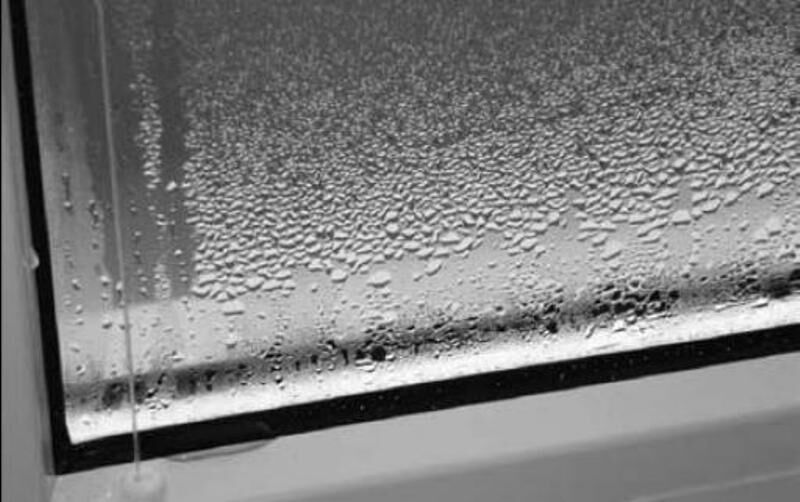
One of the first signs of increased moisture is water droplets protruding from windows, mirrors, metal
It is worth paying attention to the quickly wetting salt in an open salt shaker, swollen and poorly closing doors.
A lot of trouble can be caused by wallpaper moving away from the walls, mold and mildew stains that appear on horizontal and vertical surfaces.
Methods for determining moisture
In order to determine the microclimate of the room, you can use special devices or improvised means. Let's take a look at a few common methods.
Method number 1 - natural materials
An ordinary spruce cone can become a faithful assistant. It should be brought into the room and placed away from heat sources.
If the scales open, the room has a dry microclimate. If the water vapor content in the air is increased, the cone will remain tightly compressed.
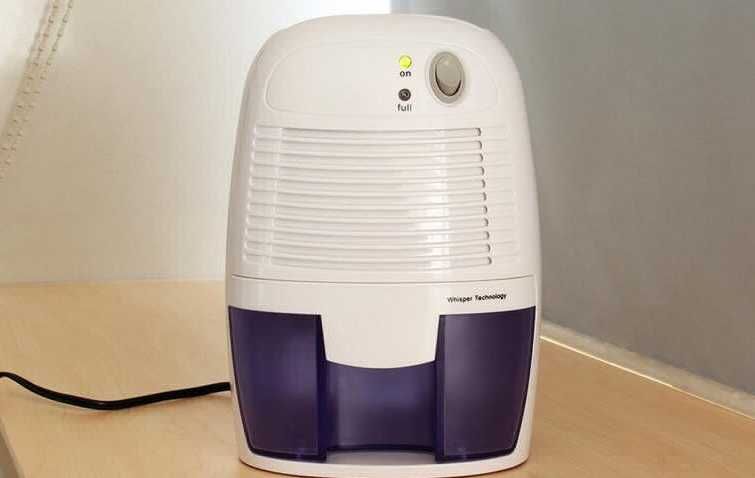
All devices for measuring humidity should be placed away from sources of heat and drafts. Only in this case the readings will be correct
A more complicated way is a home-made device made from a spruce branch, which allows you to track the dynamics of the water vapor content in the room.
A cleaned spruce stick 21-30 cm long is fixed on the board from the side of the cut, while the other end remains free. When the moisture level rises, it will go down, which can be checked by fixing the readings with a pencil.
Method number 2 - a glass of water
It is enough to do an elementary experiment: cool a glass beaker with water in a refrigerator to a temperature of 3-5 ºС.
Taking the container out of the refrigerator, you should observe it for 5-10 minutes:
- if the condensate flows down in large droplets - there is excessive humidity in the room;
- glass walls dry instantly - there is a lack of water vapor in the air;
- the container remains misted - the humidity is close to ideal.
As in the previous case, this method is quite approximate. However, it allows you to determine not only the increased and decreased levels of water vapor, but also comfortable humidity.
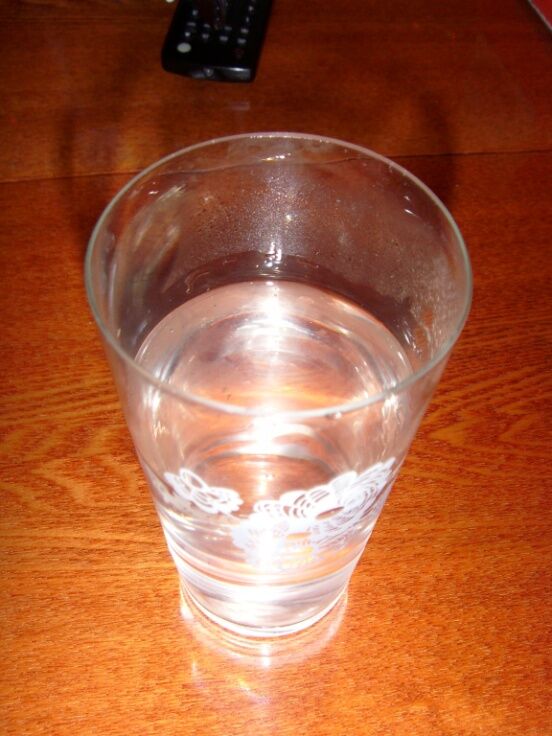
The easiest way to determine humidity without instruments is a glass of water. It is enough to put it in the refrigerator for a while, and then determine the result
Method number 3 - Assman psychrometer
For this method, a special device is required, consisting of two alcohol thermometers: one ordinary, and the other moistened with a damp cambric tape.
Readings should be taken from two devices, which will differ due to the influence of the environment, primarily the moisture content in the atmosphere.
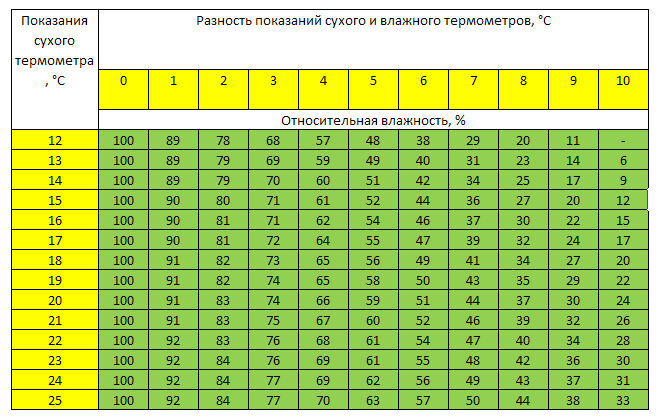
With the help of a table compiled by the German meteorologist Assmann, it is possible to accurately determine the degree of air humidity, having previously carried out simple manipulations.
From the first value, you need to subtract the second, after which in the Assmann table in the vertical column find the dry appliance indicator, and in the horizontal - the temperature difference. The number at the intersection of the lines indicates the desired level of moisture in the room.
At home, you can get by with one room thermometer. To do this, you first need to fix the temperature in normal mode, and then wrap the head of the device with a damp cloth or swab.
After 5-10 minutes, you can take the result, then calculate the difference between the readings and substitute the data in the table.
Method number 3 - accurate hygrometer readings
The most convenient way to determine the humidity of the atmosphere is with a hygrometer - a special device designed for this purpose.
There are many varieties of such devices operating on different principles: weight, film, hair, condensation, electrolytic, ceramic.
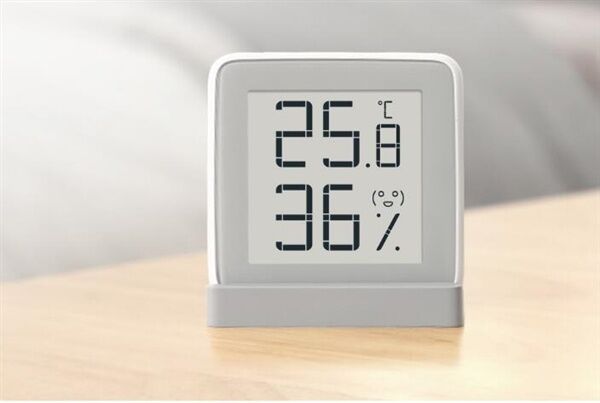
In everyday life, combined devices are often used that allow you to simultaneously measure both air humidity, its temperature, and sometimes atmospheric pressure.
Particularly widespread are electronic hygrometers, the operation of which can be based on different methods of taking readings. Among them, we note the following categories of devices:
- optoelectronic - with measurement using a cooled mirror;
- resistive using the effect of changing the conductivity of certain types of salts / polymers;
- capacitive, which takes into account the change in capacitance of the capacitor;
- devices based on the determination of air conductivity.
Models of hygrometers can be stationary or mobile. Devices from the last category can be transferred from one room to another.
To maintain the proper microclimate in the apartment, you can use the recommendations of specialists. So, to deal with too dry air, apply:
- folk methods;
- special devices.
A decorative fountain, a spacious aquarium with colorful fish or flowerpots with home flowers are not only spectacular interior decorations, but also an effective way to maintain normal humidity in the atmosphere of a living space, such as a living room.
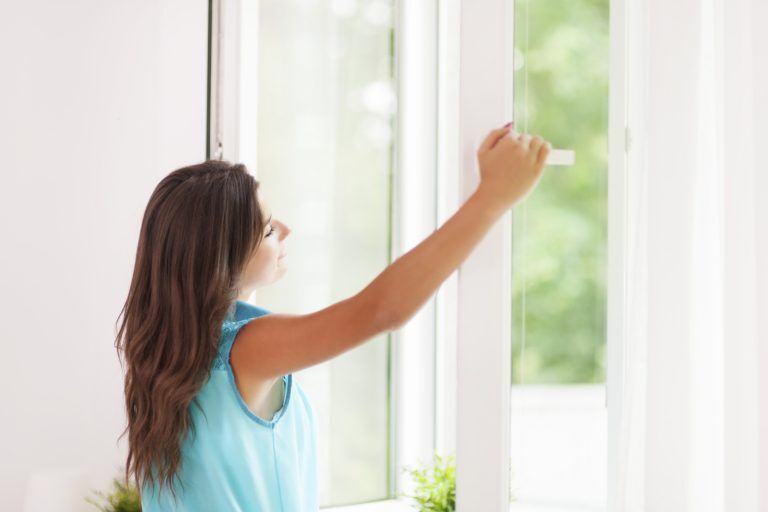
An elementary effective way to increase the content of water vapor is regular wet cleaning and ventilation of the room. They guarantee the maintenance of an optimal microclimate in the room.
A simple but quite effective remedy is to place water containers near heaters or on radiators. The liquid in the vessels must be added as it evaporates.
Alternatively, wet towels, napkins or other pieces of cloth are thrown over the batteries. You can also hang your laundry to dry in the room.
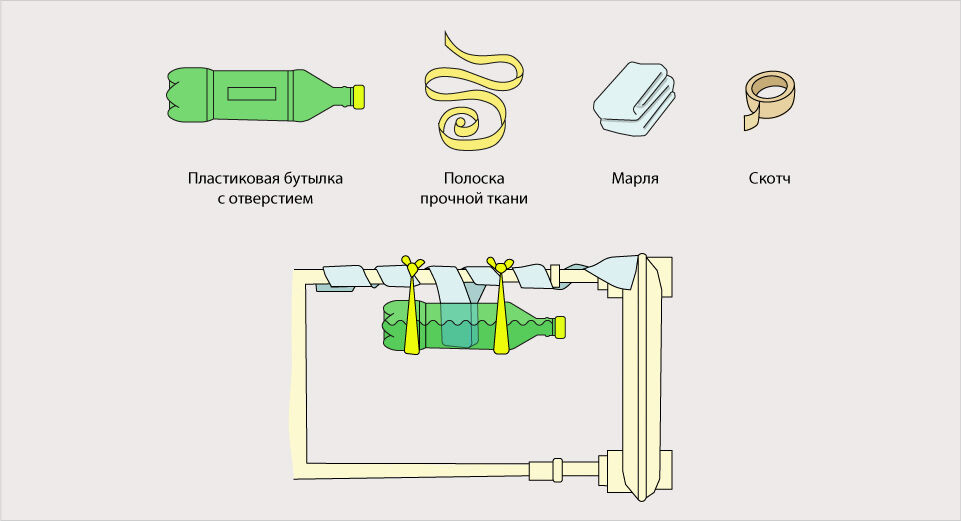
An alternative to complex devices can be a home-made device made from a plastic bottle of water suspended from a battery and gauze tape.
Special moisturizing devices will help to radically solve the problem with the level of humidity, the work of which is based on various methods:
- mechanical humidifier with a fan, quite noisy, but not very efficient - 50-61%;
- steam humidifier that functions similarly to an electric kettle. It is able to increase the rate of vapor content by 60%;
- ultrasonic humidifier, the method of operation of which is based on the spraying of water drops using a piezoelectric emitter. The device, which quickly raises the humidity to 100%, is quiet and safe.
The first two options are distinguished by their affordable cost and the possibility of using tap water, while a more expensive ultrasonic device requires distilled liquid to operate.
To reduce the degree of humidity in the air, you can also use either traditional methods, or resort to the help of modern devices.
In a humid room, care should be taken to let in as much sunlight as possible. The windows do not need to be shaded with curtains, because the rays of the sun perfectly dry the air. Housing should be ventilated regularly to let in fresh air.
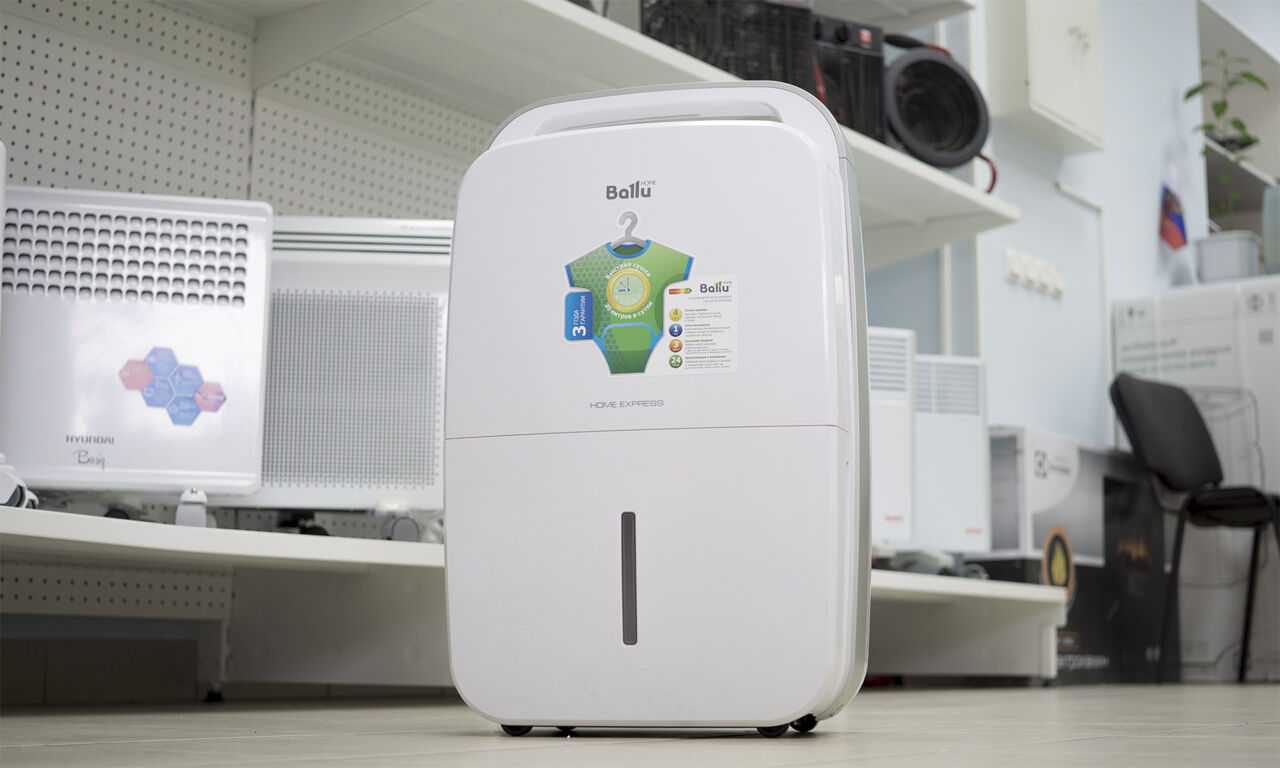
There are various models of air dryers. These household appliances are capable of removing daily from 12 to 50 liters of moisture.
Forced exhaust ventilation should be installed in all rooms, and it is better to cook in the kitchen by turning on a powerful hood. If an air conditioner is installed in the apartment, it is important to choose the optimal mode of its operation.
If the air temperature is insufficient, it is worth considering the use of additional heating devices. When performing construction and finishing works, it is desirable to prefer natural materials that absorb moisture well.
The best results can be achieved using special devices. The two most commonly used devices are:
- plastic containers filled with adsorbents - substances that actively absorb water vapor. It is important not to forget to change the filler as it is moistened;
- household dehumidifiers air, which are usually based on the principle of condensation of atmospheric water vapor on a plate, the temperature of which is below the dew point.
To normalize the microclimate in the room, it is important to pay attention to windows and window receptions. It is best to insert modern double-glazed windows made using new technologies that guarantee air circulation.
Conclusions and useful video on the topic
A video with a specialist's story about what troubles can be expected from excessively dry air in living spaces:
The following video will help you get information about the various types of devices designed to measure the level of humidity:
The video clearly shows 5 easy ways to increase the humidity in the room:
At the first deviations, you need to think about what to do to normalize the microclimate in the apartment. In some cases, you can get by with home methods, but devices designed for this purpose will provide more effective assistance.

